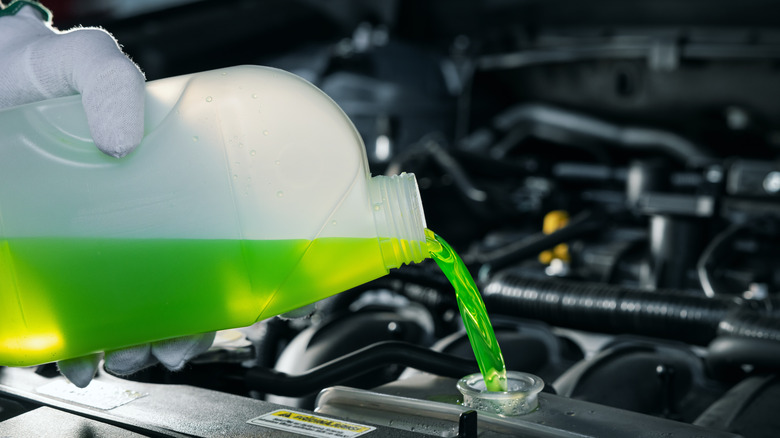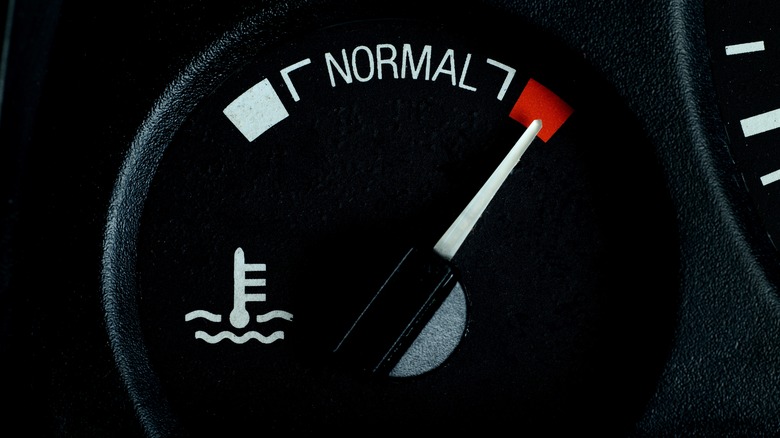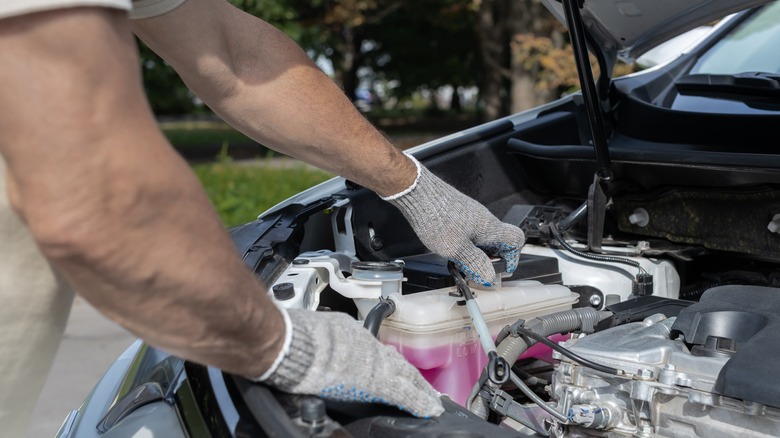Do Cars Need Antifreeze In Summer? Here's What You Need To Know
The name 'antifreeze' is pretty self-explanatory. Simply put, antifreeze is a liquid that lowers the freezing point of your coolant. A common misconception is that antifreeze and coolant are one and the same, but this is not true. Antifreeze is meant to be mixed with water, and the resulting concoction is called 'coolant.' There are multiple different types of antifreeze, and it's important to use the right formula, so be sure to check with a mechanic or consult your car's manual if you're unsure which type is best for your vehicle.
Frozen coolant can crack your engine block, causing huge repair bills, but antifreeze is also effective in other ways, too. For example, antifreeze stops corrosion from building up within your coolant system, and it also raises the boiling point of the coolant. As a result, it's recommended to have antifreeze in your coolant all year round, including the summer, and not just through winter.
Here's why antifreeze is beneficial through the summer
The boiling point of water is 212°F, and it might not take long for your engine to get water up to that temperature during normal operation. This is especially true in stop-start driving, as airflow will be minimal. If your coolant evaporates, the engine will overheat more quickly, and this can lead to serious and permanent damage. For example, head gaskets can fail as a consequence of running your engine too hot and allowing the coolant to evaporate.
Adding antifreeze to water in a 1:1 ratio raises the boiling point from 212°F to around 224°F. Once the coolant mix is in the system and secured with a pressurized radiator cap, the boiling point rises to around 248 degrees. Having antifreeze in your engine during summer helps your engine to deal with extreme temperatures, and could save you from a very upsetting trip to the garage.
Antifreeze does lose its effectiveness over time and expire. Most formulas are rated as effective for between two and five years, or 48,000 to 100,000 km. It's wise to be proactive and change your coolant annually to ensure it's at the right level. Drivers should also check the level regularly, and if it dips below the minimum level, top it up. Letting the coolant drop below this figure could easily lead to overheating, even with antifreeze in the system.
Here's how to top up your coolant system with antifreeze
If you've checked your coolant system, and the level is looking a little low, here are the simple steps you need to follow in order to correctly top up the system. Make sure you mix antifreeze with water first before adding, so that you know the concentration within your system. Some antifreeze will come pre-mixed, so double-check before you add water to the formula.
First, do not add antifreeze when the engine is hot, so make sure the engine is cool before starting. The car should not have been used for at least 30 minutes. If it's hot, you run the risk of scalding yourself. This is also a great time to make sure the car is parked on a level surface, as if it's not, the coolant tank's reading will be incorrect.
To begin, locate your expansion tank, and read the coolant level using the measurements provided on the tank. Next, remove the cap, and add your antifreeze mixture until the measurement is at the 'max' line on the expansion tank. A hot engine will give an incorrect reading, so again, be sure that the engine is cool. Once topped up, screw the lid on and you're all done. It's important to know that the coolant level shouldn't drop, so if the level is low on a regular basis, it might be worth booking in with a mechanic to have the system inspected.


